Related Research Articles

Pyramid Lake is the geographic sink of the basin of the Truckee River, 40 mi (64 km) northeast of Reno, Nevada, United States.

The Northern Paiute people are a Numic people that has traditionally lived in the Great Basin region of the United States in what is now eastern California, western Nevada, and southeast Oregon. The Northern Paiute pre-contact lifestyle was well adapted to the harsh desert environment in which they lived. Each tribe or band occupied a specific territory, generally centered on a lake or wetland that supplied fish and waterfowl. Communal hunt drives, which often involved neighboring bands, would take rabbits and pronghorn from surrounding areas. Individuals and families appear to have moved freely among the bands.
The Shoshone or Shoshoni are a Native American tribe with four large cultural/linguistic divisions:

The Truckee River is a river in the U.S. states of California and Nevada. The river flows northeasterly and is 121 miles (195 km) long. The Truckee is the sole outlet of Lake Tahoe and drains part of the high Sierra Nevada, emptying into Pyramid Lake in the Great Basin. Its waters are an important source of irrigation along its valley and adjacent valleys.

The Goshutes are a tribe of Western Shoshone Native Americans. There are two federally recognized Goshute tribes today:
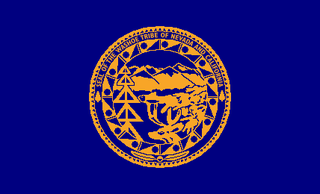
The Washoe or Wašišiw are a Great Basin tribe of Native Americans, living near Lake Tahoe at the border between California and Nevada. The name "Washoe" or "Washo" is derived from the autonym Waashiw in the Washo language or from Wašišiw (waší:šiw), the plural form of wašiw.

The Indigenous peoples of the Great Basin are Native Americans of the northern Great Basin, Snake River Plain, and upper Colorado River basin. The "Great Basin" is a cultural classification of indigenous peoples of the Americas and a cultural region located between the Rocky Mountains and the Sierra Nevada, in what is now Nevada, and parts of Oregon, California, Idaho, Wyoming, and Utah. The Great Basin region at the time of European contact was ~400,000 sq mi (1,000,000 km2). There is very little precipitation in the Great Basin area which affects the lifestyles and cultures of the inhabitants.

The Southern Paiute people are a tribe of Native Americans who have lived in the Colorado River basin of southern Nevada, northern Arizona, and southern Utah. Bands of Southern Paiute live in scattered locations throughout this territory and have been granted federal recognition on several reservations. Southern Paiute's traditionally spoke Colorado River Numic, which is now a critically endangered language of the Numic branch of the Uto-Aztecan language family, and is mutually intelligible with Ute. The term Paiute comes from paa and refers to their preference for living near water sources. Before European colonization, they practiced springtime, floodplain farming with reservoirs and irrigation ditches for corn, squash, melons, gourds, sunflowers, beans, and wheat.

Ute are an Indigenous people of the Great Basin and Colorado Plateau in present-day Utah, western Colorado, and northern New Mexico. Historically, their territory also included parts of Wyoming, eastern Nevada, and Arizona.
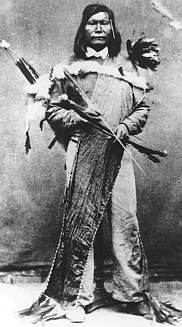
The Paiute War, also known as the Pyramid Lake War, Washoe Indian War and the Pah Ute War, was an armed conflict between Northern Paiutes allied with the Shoshone and the Bannock against settlers from the United States, supported by military forces. It took place in May 1860 in the vicinity of Pyramid Lake in the Utah Territory, now in the northwest corner of present-day Nevada. The war was preceded by a series of increasingly violent incidents, culminating in two pitched battles in which 79 Whites and 25 Indigenous people were killed. Smaller raids and skirmishes continued until a cease-fire was agreed to in August 1860; there was no treaty.

The Ute Indian Tribe of the Uinta and Ouray Reservation is a federally recognized tribe of Indians in northeastern Utah, United States. Three bands of Utes comprise the Ute Indian Tribe: the Whiteriver Band, the Uncompahgre Band and the Uintah Band. The Tribe has a membership of more than three thousand individuals, with over half living on the Uintah and Ouray Indian Reservation. The Ute Indian Tribe operates its own tribal government and oversees approximately 1.3 million acres of trust land which contains significant oil and gas deposits.
Tahoe Tessie is a cryptid said to inhabit the depths of Lake Tahoe, a lake that straddles the border between California and Nevada. Reports of Tessie date back to the mid-19th century, and over time, the creature has become a well-known part of local folklore.
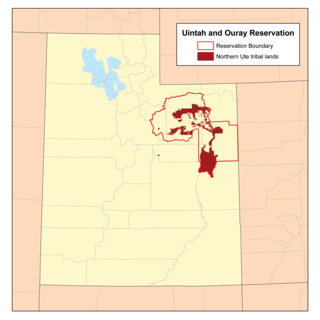
The Timpanogos are a tribe of Native Americans who inhabited a large part of central Utah, in particular, the area from Utah Lake east to the Uinta Mountains and south into present-day Sanpete County.
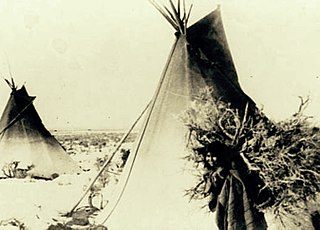
The Pahvant or Pahvants were a band of Ute people that lived in present-day Utah. Called the "Water People", they fished and hunted waterfowl. They were also farmers and hunter-gatherers. In the 18th century they were known to be friendly and attentive, but after a chief's father was killed by emigrating white settlers, a group of Pahvant Utes killed John Williams Gunnison and seven of his men during his exploration of the area. The bodies of water of their homeland were dried up after Mormons had diverted the water for irrigation. Having intermarried with the Paiutes, they were absorbed into the Paiute Indian Tribe of Utah and relocated to reservations.
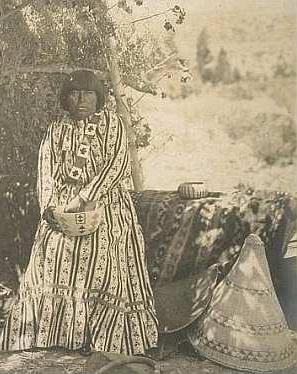
The Kucadɨkadɨ are a band of Eastern Mono Northern Paiute people who live near Mono Lake in Mono County, California. They are the southernmost band of Northern Paiute.

Cascade Lake is a glacial lake located in El Dorado County, California approximately 1 kilometre (0.62 mi) from Lake Tahoe. Cascade Lake is the second largest tributary lake feeding into Lake Tahoe. Its depth is 170 feet (52 m), 1 mile (1.6 km) long and 0.5 miles (0.80 km) wide. The lake is also within three to four miles from its neighboring lake, Fallen Leaf Lake, and Emerald Bay.
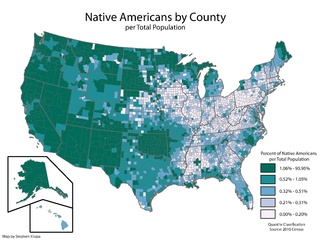
Indigenous peoples have lived in the area now known as the state of Utah for thousands of years. Today they are divided into five main groups: Utes, Goshutes, Paiutes, Shoshone, and Navajo. Each occupies a different region within the state, many of which regions extend across borders into other states. In the 2010 census, there were a total of 32,927 American Indian and Alaska Natives living within the state, which totaled to 1.19% of the total population of Utah.

Wakara's War, also known as Walker's War was a dispute between the Ute people and the Mormon settlers in Utah Valley and surrounding areas. This war is characterized as a string of disputes and skirmishes over property and the land from July 1853 to May 1854. This war was influenced by factors such as religious differences, the slave trade, and the division of the Salt Lake Valley.
The Ong is a mythical creature from Washoe folklore, described as a giant bird with an eagle-like body, a warrior's face, and wings longer than the tallest pine trees. The Ong was believed to inhabit the waters of Lake Tahoe, preying on those who wandered too close. According to legend, it carried its victims to its nest at the bottom of the lake, where they were never seen again. The story of the Ong also explains the naming of Lake Tahoe and the bravery of a young warrior who ultimately defeated the creature.
References
- 1 2 "Native American Legends: Water Babies". Native-Languages.org. Retrieved 23 August 2024.
- 1 2 "Great Basin Indian: Social organization". Britannica. Retrieved 23 August 2024.
- 1 2 3 4 D. Robert Carter (29 April 2006). "Mysterious monsters inhabited Utah Valley waters". Daily Herald. Retrieved 23 August 2024.
- 1 2 Allison Jones. "Lake Legends of Wa She Shu". Northwoods Tahoe. Retrieved 14 September 2024.
- 1 2 Downs, G. (2017). "Native American Stories of the Sacred". Green Humanities. 2: 158–159. Retrieved 23 August 2024.
- 1 2 "Pyramid Lake". Atlas Obscura. Retrieved 23 August 2024.
- 1 2 William J. Bauer, Jr. (25 March 2013). "The Giant and the Waterbaby: Paiute oral traditions and the Owens Valley Water Wars". Boom California. Retrieved 23 August 2024.
- ↑ Richard W. Stoffle; Kathleen A. Van Vlack; Hannah Z. Johnson; Phillip T. Dukes; Stephanie C. De Sola; Kristen L. Simmons (October 2011). Tribally Approved American Indian Ethnographic Analysis of the Proposed Delamar Valley Solar Energy Zone (Report). University of Arizona. Retrieved 23 August 2024.